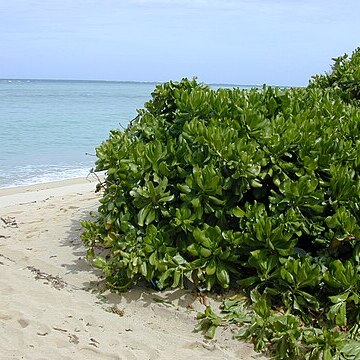Erect, spreading shrub or small tree to 4 (–5) m high. Leaves alternate or ± whorled: lamina obtuse, oblong to obovate to oblanceolate, tapering basally into petiole, obtuse to rounded or sometimes emarginate at apex, 4–23 cm long, 2–9 (–11) cm wide, usually entire (sometimes obscurely denticulate towards apex), thick, ± fleshy, glabrescent (silky to glabrous), shiny; axillary hairs long, silky or woolly; petiole absent or to 2 cm long. Flowers in axillary cymes; peduncle 5–20 mm long; bracteoles lanceolate-ovate, 2–8 mm long; pedicel 2–12 mm long. Sepals oblong-linear or narrowly lanceolate, 3–6 mm long, free (calyx tube cup-shaped to campanulate, 3–6 mm long, silky; lobes narrowly oblanceolate to linear, 3–5 mm long, fide Telford 1993: 392). Corolla 14–28 mm long, glabrous or pubescent/silky outside, densely bearded inside, white to cream to pale lilac, the veins often purple; barbulae flat, with long apical hairs; wings to 1.5 mm wide, laciniate. Indusium glabrous above or sparsely hairy. Fruit ovoid, globular or subglobose to obovoid, 7–13 (–18) mm long, grooved, ribbed, whitish, glabrous or silky hairy.
A shrub with many branches. It grows 3 m high. The wood is soft and pale green. The leaves are glossy and oblong. They are thick and leathery. They are rounded at the tip and narrow at the base. They are 5-20 cm long by 4-7 cm wide. The flowers are in the axils of leaves. They are white and paper like and have 5 lobes. These are about 1 cm long. The flowering groups are 2-5 cm long. The fruit is round and 1 cm long. It is white and fleshy.

